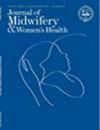Antenatal Care Visits, Institutional Births, and Associated Risk Factors in Afghanistan: Insights from the Multiple Indicator Cluster Survey 2022-2023
Abstract
Introduction
Insufficient use of antenatal care (ANC) services and institutional births services can elevate the maternal mortality risk in limited resource settings. Hence, the key objective of this study was to evaluate the potential association between the frequency of ANC visits and institutional birth services in Afghanistan, while also identifying other sociodemographic factors that may exert influence. Furthermore, we explored factors associated with the attendance of women at ANC visits during their pregnancy.
Methods
We employed data from the most recent Multiple Indicator Cluster Survey conducted in Afghanistan in 2022 to 2023 with a total of 8096 women aged 15 to 49. A complex survey weight-adjusted logistic regression model was used to examine factors related to institutional births, and a multinomial logistic regression model was fitted to assess the relationships between sociodemographic factors and ANC visits, adjusting for survey weights, cluster effects, and strata.
Results
Approximately 40% of the sample (n = 3247) had undergone 4 or more ANC visits, and 74.4% (n = 6,022) had opted for institutional birth. Women's higher education was found to be associated with ANC visits. The area of residence, wealth index, education levels of women, ownership of mobile phones, number of children, and number of ANC visits were associated with institutional births. Compared with women with no or one ANC visit, those with more than 3 visits had 31% higher odds (adjusted odds ratio, 1.31; 95% CI, 1.10-1.57) of accessing institutional births.
Discussion
Our findings indicate a significant association between ANC visits and use of institutional birth care. These findings carry implications for advancing safe motherhood and childbirth by enhancing women's social status.

 求助内容:
求助内容: 应助结果提醒方式:
应助结果提醒方式:


